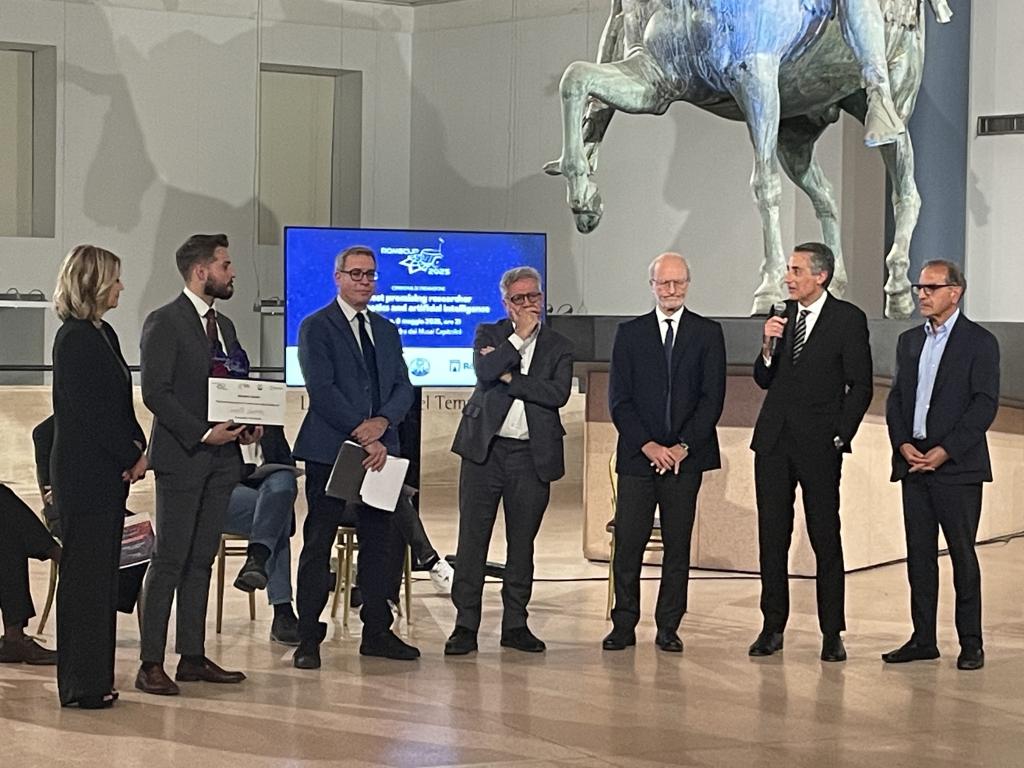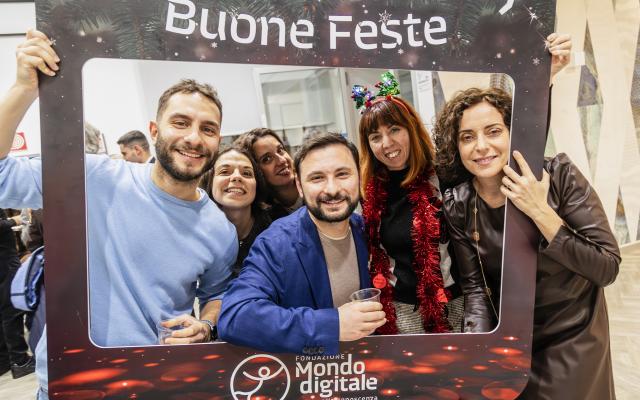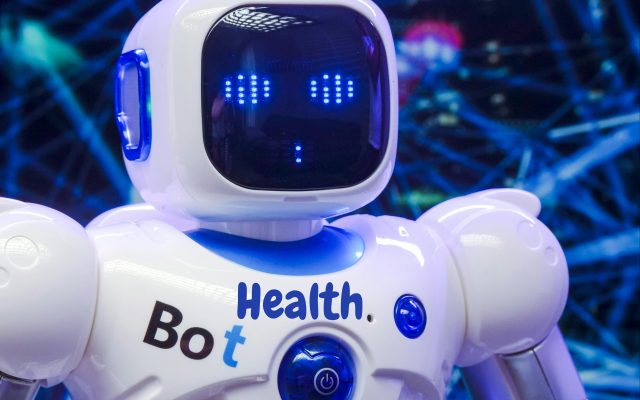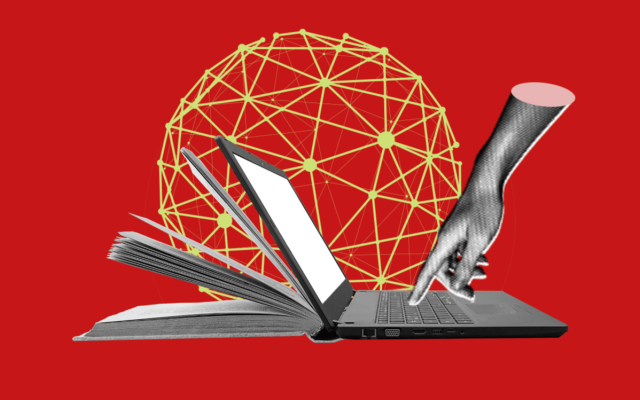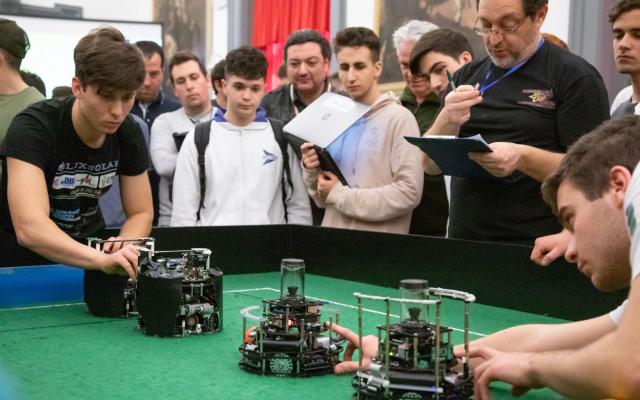Clemente Lauretti's research enhances human intelligence and reduces the margin for error in the operating theatre
Born in Rome in 1991, Clemente Lauretti is one of those young researchers who make a future in which surgery will be safer, more precise and more humane seem very close, thanks to the skilful use of technology. Yesterday, he was awarded the prize (€20,000) for the third edition of theMost Promising Researcher in Robotics and Artificial Intelligence, promoted by the Fondazione Mondo Digitale ETS and the Università Campus Bio-Medico di Roma. The award ceremony took place during a special evening in the Sala Esedra of the Capitoline Museums, hosted by journalist Paolo Ottolina. The event involved all eleven finalists, who briefly shared their personal motivations and research work.

In the context of RomeCup 2025, the third edition of the Most Promising Researcher in Robotics and Artificial Intelligence award offered not only recognition of scientific excellence, but also a moment of collective reflection on the value of research and the strategic role of the younger generations in the future of technology. Paolo Dario, pioneer of Italian robotics and president of the jury, strongly emphasised that ‘we are not condemned to suffer the effects of artificial intelligence: we are the protagonists of this development, which must be governed by people, not technologies’. For Dario, the quality of the projects submitted is a sign of a solid education system capable of producing globally competitive professionals. ‘We have not just filled factories, we have trained a generation of excellence in robotics,’ he added. ’And we owe this to Italy, to our education system and to the European programmes that have made us leaders in global research. Our strength lies in combining technology with historical knowledge, as taught in the 26th canto of Inferno: virtute e canoscenza, never lose sight of principles.’
Eugenio Guglielmelli, rector of the Campus Bio-Medico in Rome, proudly highlighted the high number of applications and the sensitivity of the participants. He then issued an invitation to young researchers: ‘Continue to stay connected, to share experiences, successes and challenges. This is how a true scientific community is built.’
‘The work of these young people is not isolated, but is part of a sociotechnical constituency: a coherent set of cultural, social and technological factors that align and reinforce each other,’ explained Alfonso Molina, scientific director of the Fondazione Mondo Digitale. ’This award celebrates not only individual talents, but also the ecosystem that supports them and makes scientific progress possible.’ The reference is to the theory of ‘sociotechnical constituencies’, developed by Molina himself in the 1990s to describe those collective processes of innovation in which people, technologies, institutions and visions of the future co-evolve.
The winner, Clemente Lauretti, spoke about his life choice: ‘Driven by a desire to work for the well-being of people, I left the corporate world to devote myself to research. Returning to university and seeing technology transform into concrete applications was the greatest motivation to continue.’
Clemente now works at the Campus Bio-Medico University of Rome, where he leads one of the most promising projects in the field of medical robotics. His work focuses on robot-assisted spinal surgery, a field in which even a mistake of a few millimetres can have irreversible consequences. That is why he has designed an integrated platform that combines cooperative human-machine control, intraoperative 3D reconstruction and artificial intelligence to support the surgeon in real time. This is not just a theoretical exercise: the system has already been tested on animal vertebrae and is now in the preclinical validation phase. It is a concrete innovation, ready to enter the operating theatre.
Behind the engineer, however, is a humble and determined mind that believes in the value of applied research and dialogue between different fields of knowledge. Clemente's goal is not to replace the surgeon, but to enhance their capabilities, reduce the margin of error and make every gesture safer for the patient.
The system he helped design represents a fundamental step forward compared to the surgical robots currently in use. Thanks to a tissue recognition algorithm and active control of force and drilling torque, the robot can stop before damaging delicate structures and adapt dynamically to the type of bone.
A patent for the platform was filed in 2023 and clinical validation is currently underway with Masmec and Teleconsys. Clemente has been involved in numerous cutting-edge projects such as Bone and Bistoury, which coordinate the integration of artificial intelligence into real surgical environments. His work has already led to high-impact publications, presentations at international conferences and membership of the editorial boards of prestigious journals.
Clemente is not only a brilliant scientist: he is also a visionary innovator who left a stable job to devote himself to research. ‘I believe my story can be inspiring: I chose to take a risk because research has the power to truly change people's lives.’
The numbers speak for themselves: in the last 15 years, spinal surgeries have doubled, while musculoskeletal disorders among surgeons have increased by 27%. His solutions can improve the accuracy of procedures, reduce physical fatigue for doctors, decrease hospital stays and make surgery more equitable and accessible.
But beyond the accolades, what Clemente represents is the spirit of a generation of innovators who combine scientific rigour and social impact with a vision of robotics at the service of the common good.
At a time when the role of artificial intelligence in medicine is being debated, Lauretti's work offers a clear answer: the best technology is that which enhances human intelligence, not that which replaces it.
